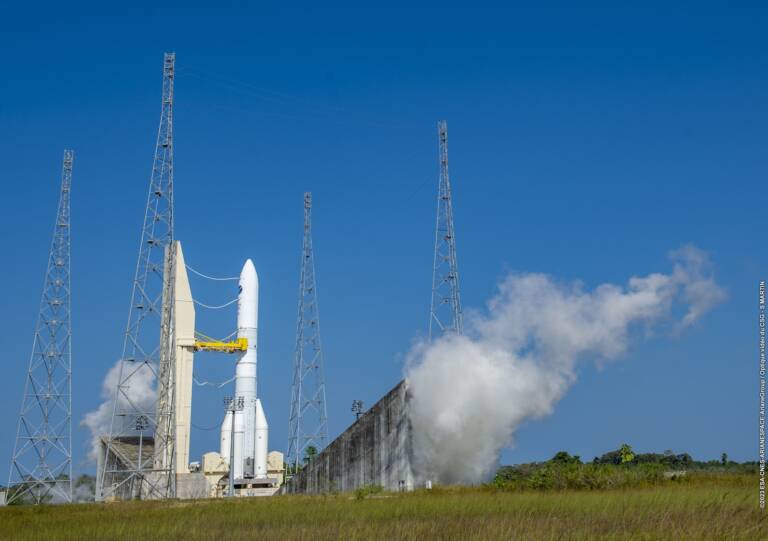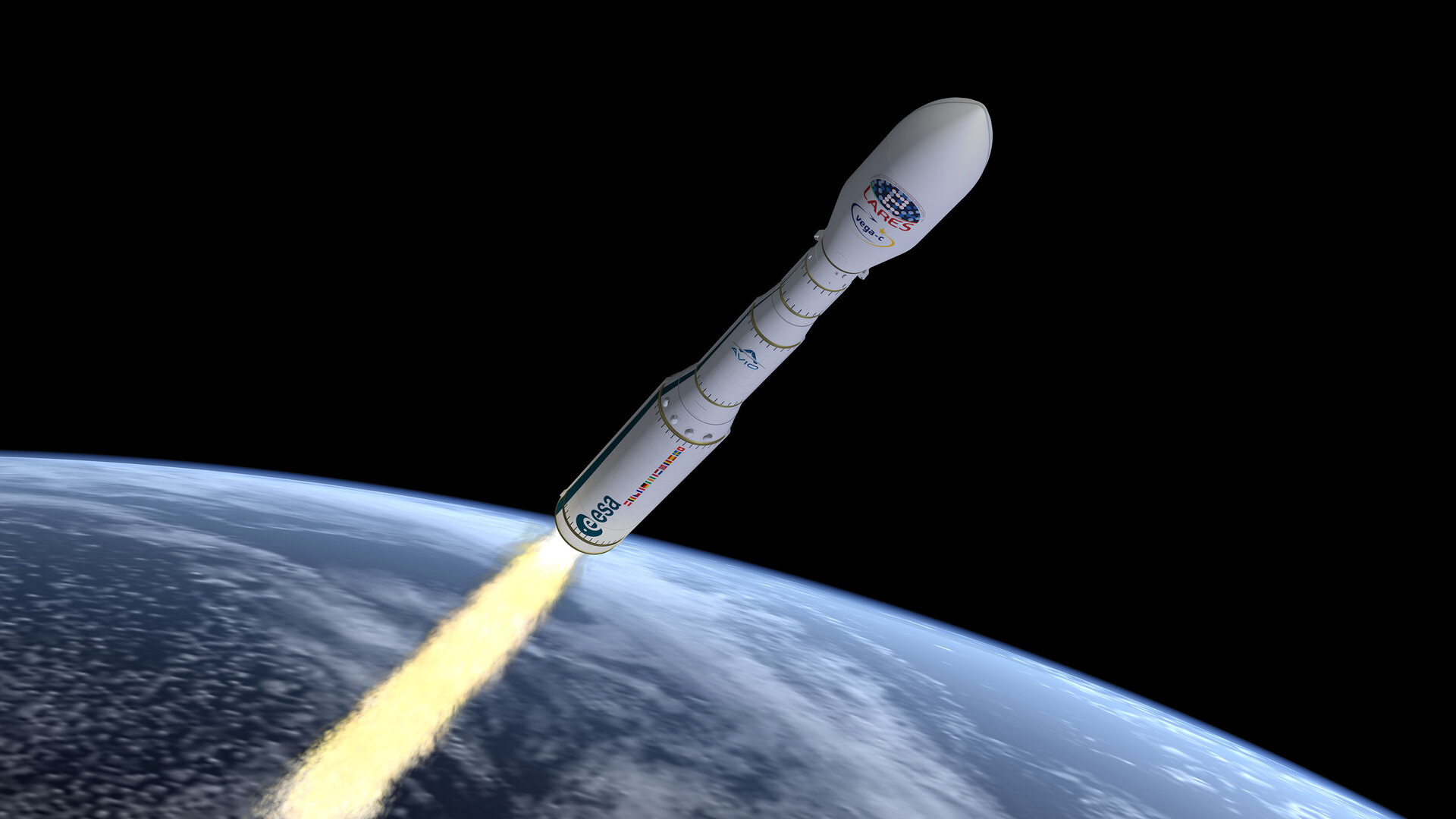European humiliation: there are no more functioning missile carriers

Europe has dedicated to the scientist Galileo Galilei the "ambitious" project of a constellation of geostationary satellites for navigation that develops a system similar to GPS, but more advanced. This, however, requires launching a large number of satellites into a high, geostationary orbit, and here the inability of modern, so to speak, European technology is being demonstrated.
Because Europe has profoundly declined in this field too. “It finds itself in a paradoxical situation while just over ten years ago it dominated the market,” says Philippe Baptiste , president of the National Center for Space Studies (Cnes).” W e haven't evolved Ariane fast enough, we are undoubtedly paying for a form of arrogance from that era. We have temporarily lost the ability to access space. » Because the truth is that there are no more European pitchers.
Gone are the days when Ariane, Soyuz and Vega, marketed by Arianespace, took off from Europe's Kourou spaceport between 5 and 11 times a year. Today there are no more pitchers . To send four Galileo satellites, Europe will turn to a private partner of NASA, the American SpaceX, Elon Musk's company. “This development across the Atlantic is linked to a clearly declared political will: NASA missions were reoriented and the agency had to strive to revive the national industry by “making it happen” to private actors, whenever possible, rather rather than doing it alone,” explains Michel Friedling, former Air Force general, first head of Space Command and now co-founder of LookUp Space.
A problem of loss of sovereignty and industrial policy
The situation is humiliating for the Old Continent and its "Ambitious" policies. to develop an autonomous GPS system you have to rely on your direct competitor, and this is truly very humiliating.
A combination of cyclical and structural factors has led to this situation. Until March 2022, Arianespace had three launchers to put satellites into orbit: Ariane 5 in the heavy launcher segment, Soyuz-Fregat in the medium launcher segment – “rustic and robust rockets perfectly suited to most in-orbit satellite needs” , describes Philippe Baptiste – and Vega for small satellites.
The wheels came to a halt when, in response to EU sanctions against Russia, Russian technicians left Kourou while two launches of the Galileo satellites were scheduled. The situation became tense when, on July 5, 2023, the Ariane 5 took off from Guyana for the last time, after 111 successes (98.4% yield), to finally exit service. >It was supposed to be replaced by Ariane 6, but something went wrong.
Ariane 6, the great latecomer
The problem is that Ariane 6 is a project that is four years late: “Flexible, it was designed to replace Ariane 5 and Soyuz,” recognizes Philippe Baptiste. It must also cost 40% less than Ariane 5, an advantage in a more competitive market favored by the strong growth of the low-orbit small satellite segment. Ambitious…
The first flight of Ariane 6, a competitor to SpaceX's Falcon 9, was scheduled for July 21, 2020, the anniversary of man's first step on the Moon. It was postponed to 2022, then to 2023; it will not be operational before 2024. «We are paying the price for the complexity of the launcher and above all of our organization», explains the president of Cnes. Until Ariane 5, a state-run government program, the system worked pretty well overall. With Ariane 6 we have states that pilot the program and industrialists who certainly have greater responsibilities, but who are very bound by the rules of geographical return and who are not the main investors in the development of the program; This is not healthy. »
Because the delay, and therefore the objective operational failure, of Ariane 6 is precisely linked to the European development model: bureaucratic and which divides responsibilities in a percentage way between the various states, whether they have the skills and capabilities or not. So what the single national state was able to do efficiently becomes tiring and complex at a European level. If Ariane 6 had been developed by France it would already be in flight.
Among the problems, the development of the tank filling system, while the tests of the Vulcain 2.1 (main stage) and Vinci (upper stage) engines, in Kourou and Lampoldshausen, Germany, are not going as well as expected: the transfer of the production of the Ariane 6 engine in Germany, as part of task sharing, is not partly related to delays in the development of the rocket? I don't know, but I wonder,” comments Franck DeCloquement.

Even Vega, the program that was once developed only by Avio and which was a derivative of the Alfa military missile of the seventies, had similar problems: Avio was forced to "Europize" its program, but no one was able to supply the components necessary at a competitive price. Avio was forced to turn to Yuzhnoye in Ukraine which, however, was not, in turn, able to guarantee the quality necessary for Vega C. The launch of the carrier on 20 December 2022 failed, destroying two satellites, requiring the redesign of an important component with the supply entrusted to ArianeSpace and there will be no launches until 2024. If Avio had had the efficiency of the launcher as its objective from the beginning, without constraints, we would have already overcome the problem, as it was not present with previous launchers.
So Europe, to launch European satellites, must use American launchers. A big step forward, congratulations.

Thanks to our Telegram channel you can stay updated on the publication of new Economic Scenarios articles.
The article European humiliation: there are no longer functioning missile carriers comes from Economic Scenarios .
This is a machine translation of a post published on Scenari Economici at the URL https://scenarieconomici.it/umiliazione-europea-non-ci-sono-piu-vettori-missilistici-funzionanti/ on Tue, 14 Nov 2023 13:03:35 +0000.
